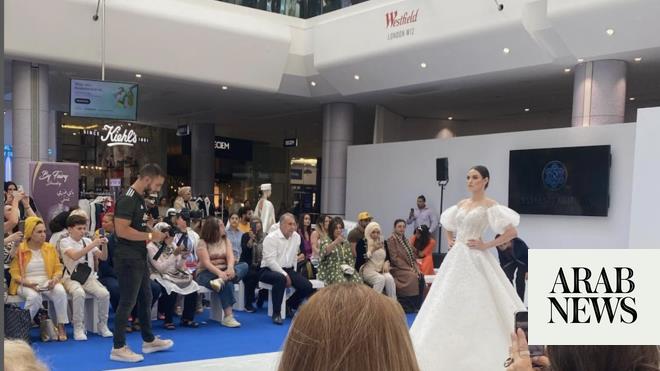
From Umm Kulthum to Dalida, the French organization’s latest exhibition focuses on some of the Arab world’s most-beloved female cultural icons
PARIS: The latest exhibition at the Arab World Institute (IMA) in Paris has been ready for almost a year, but only now, as French museums and cultural venues finally reopen after their enforced closure due to the COVID-19 pandemic, will the public finally get the chance to see “Arab Divas, from Umm Kulthum to Dalida.”
For the latest updates, follow us on Instagram @arabnews.lifestyle
The exhibition — which runs from May 19 to September 26 — was originally scheduled to open in May 2020. Now, the magnificent voices of Umm Kulthum, Dalida, Sabah, Fayrouz and Warda will once again be able to shine brightly, and transport their audience.
The show is spread over 1,000 square meters of the IMA and consists of hundreds of unpublished collectors’ items, divided into four main parts.
Elias Sarraf, Portrait of Asmahan, Alexandria, circa 1930, Beirut, Arab Image Foundation, Faysal el Atrash collection. (Thez Arab Image Foundation)
The first is devoted to the pioneers of the 1920s; visionary, forward-thinking women who paved the way for those that followed. “It was fundamental for us to show the overlooked divas, the pioneers, the ones who contributed to the creation of the entertainment culture, and of popular music, to the expansion of radio broadcasting, and to the development of cinema”, explains the exhibition’s curator Elodie Bouffard.
This section of the exhibition takes the visitor back to the streets of Cairo, which, at the time, was the Arab world’s center of culture. The tramways, the men in galabiah, the cafés, all seem to emerge from a bygone era while the diva’s voices fill the space.
“We wanted the music to move freely, not via headphones, because listening to music used to be done in a community,” Bouffard says. “It was a collective experience, a communion, even a trance, just like Umm Kulthum’s concerts.”
Vinyl of Fayruz in Baalbek “Ya amar ana wiyak _ Ma fi hada,” 1960, Beirut, Abboudi Bou Jawde collection. (Abboudi Bou Jawde)
The Egyptian capital attracted artists from all over the Middle East, including Rose Al-Yussef (whose real name was Fatma). Born in Lebanon, she became an emblematic figure of Egyptian media and theater during the inter-war years, and founded the famous cultural and political magazine Rose al-Yussef.
Badia Massabni was another hugely significant character from the same period. She opened the first cabarets in Alexandria and Cairo, and coached the Arab World’s greatest dancers. The show also shines a spotlight on Munira El-Mahdeya, she was a master of tarab — the emotional aesthetic at the center of the Arab artistic tradition — and was the first Muslim woman to perform on stage, in the theatrical production “Saladin.”
The world of cinema is represented by Assia Dagher, a Lebanese producer responsible for propelling the acclaimed director Youssef Chahine and the well-known diva Sabah to stardom. In recognition of her work, she was granted Egyptian nationality.
Leila Mourad on the cover of the Al-cinema magazine, Egypt, 1945, Beirut, Abboudi Bou Jawde collection. (Abboudi Bou Jawde)
“Witnessing empowered and powerful women, who truly revolutionized and played an important political role in the Arab world and beyond, is crucial for Westerners. It depicts a different image of the Oriental woman,” says Maïa Tahiri, IMA’s Arab countries communications officer.
It is thanks to such trailblazers that the great divas were able to share their remarkable talent. And the exhibition gives visitors the chance to ‘visit’ some of their dressing rooms. The first belongs to perhaps the greatest Arabic diva of all, the Egyptian icon Umm Kulthum. It is filled with her onstage costumes and accessories, and — of course — her unmistakable voice, as the speakers play some of her greatest hits.
Next up is the Algerian singer Warda, whose son has provided a number of her personal items for the exhibition. Then comes the legendary Asmahan, whose storied life as a boat-born Druze princess and spy is commemorated in just a few pictures and video recordings. And finally Fayrouz, the greatest living Arabic diva with whom visitors can become better acquainted through pictures, posters and other memorabilia loaned by devoted art collectors.
Assia Dagher on the cover of Al-Kawakeb (The planets) magazine, Cairo, 1954. Beirut, Abboudi Bou Jawde collection. (Abboudi Bou Jawde)
Bouffard explains that around 30 collectors have contributed to the exhibition, including Sabah’s dresser, William Khoury, whom she met through “friends of friends of friends” and who kindly granted Bouffard access to his personal collection of the Lebanese diva’s stage outfits, some of which are on show here.
The third part of the exhibition is dedicated to ‘Nilewood’ — the Golden Age of Egyptian cinema — and features Leila Mourad, Faten Hamama, Suad Hosny, Sabah, Tahia Carioca, Samia Gamal, Hind Rostom and Dalida. That age ended in the 1970s with the deaths of Egyptian President Gamal Abdel Nasser (1970) and Umm Kulthum (1975), and the beginning of the civil war in Lebanon (1975).
“These events were tipping points for the two cultural hubs, Beirut and Cairo,” Bouffard says. “Cinema — and culture as a whole — was also confronted with the arrival of television, which marked the end of vast popular gatherings, cinema, radio and theater, all of which constituted significantly strong social bonding moments.”
While that era may be over, many contemporary artists still draw inspiration from it. In fact, that was the inspiration for this exhibition.
"The project was born about four years ago," Bouffard says. “For a hip-hop exhibition at IMA, we brought in beatmakers from all over the Mediterranean area to create a soundtrack. Throughout our collaboration, songs by Warda, Umm Kulthum, and Fayrouz kept coming up. All the beatmakers shared this musical heritage. We started digging deeper and, not long after, Lamia Ziadeh"s book “O nuit, O mes yeux” came out. A few days after the end of that exhibition, we hosted “Love and Revenge,” in which Wael Kodaih and Randa Mirza mix in Arabic songs from that period.”
The final part of the exhibition is dedicated to these contemporary artists claiming back their cultural heritage — Ziadeh’s “curiosity wall” inspired by her book; Egyptian photographer Nabil Boutros’ photomontages taken from old movies; Youssef Nabil’s staged images of belly dancers; and Shirin Neshat’s documentary about Umm Kulthum.
The exhibition ends with an installation by Kodeih and Mirza which brings Samia Gamal and her contemporaries back to life in the form of holograms. They stand next to two turntables for a "last dance.” But this exhibition ensures they will all live on in our memories.












